A good museum can impact a curious traveler in a number of different ways. It can inspire, educate, and keep weary wanderers dry and toasty-warm on rainy days. Unfortunately, even the best museums can also overwhelm with impenetrable sizes, empty wallets with high admissions, and frustrate with endless crowds.
That’s why many smart travelers eschew the sleek caverns of major museums in favor of the little guys. Whether a writer’s home transformed into a carefully-preserved homage, a private art collection turned public treasure, or a beautiful building devoted to a niche interest, smaller museums can prove to be a far better use of time and money while traveling. The following is its own quirky collection of 15 of the best small, unusual, and underrated museums in the United States.
Stabler-Leadbeater Apothecary Museum – Alexandria, Virginia
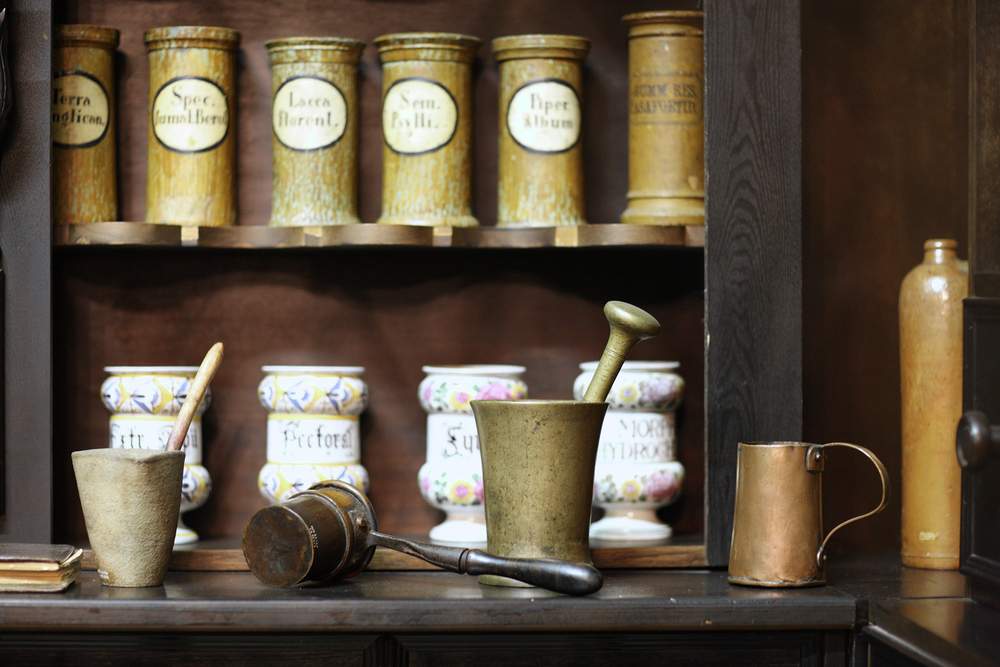
In a humble yellow building on leafy Fairfax Street, in the quaint center of downtown Alexandria, Virginia, sits the small but magical
Stabler-Leadbeater Apothecary Museum. Entering the tiny museum is like traveling back in time; after operating for generations as a family-owned pharmacy, the shop suddenly closed during the 1940s Depression. It has since been meticulously restored and preserved, with original wooden shelving, antiquated signage, and assortments of glass jars and beakers that haven’t been touched in decades.
“Entering the tiny museum is like traveling back in time”
Local volunteers conduct short but informative tours, regaling visitors with tales of colonial-era “medicine”, such as bloodletting. A particularly gruesome procedure, it was thought to cure a number of illnesses and was famously favored by George Washington, one of the apothecary’s regular customers in the eighteenth century. According to legend, another well-known apothecary patron, Robert E. Lee, was sitting in the shop chatting with the proprietor when a messenger came with his first marching orders of what would soon become the Civil War.
“Apparently, colonial-era medicine and Harry Potter’s Potions class have more in common than one would have imagined”
While the historical tales are stirring, the surroundings alone are enough to transport travelers to another era, particularly in the upstairs storeroom. There, floor-to-ceiling stacks of wooden drawers and cupboards bear hand-painted labels. These enabled the long-deceased pharmacists to easily reach their “Dragon’s Breath” and “Fumigating Pastiles”. Apparently, colonial-era medicine and Harry Potter’s Potions class have more in common than one would have imagined. In Alexandria, the famous Washington estate at Mount Vernon tends to receive the most attention — and visitors — but the Stabler-Leadbeater Museum is where to head if you really want to get in touch with the Alexandria of colonial times.
The Sixth Floor Museum at Dealey Plaza – Dallas, Texas
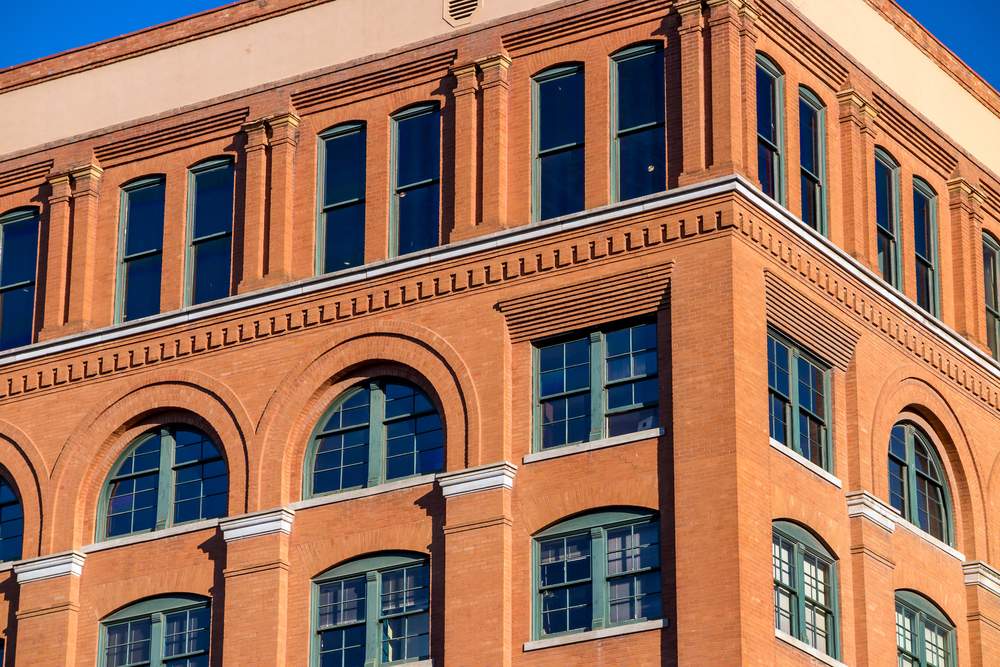
For American history buffs and conspiracy theorists alike, the
Sixth Floor Museum might prove to be morbidly irresistible. Housed in the infamous former Texas School Book Depository, the museum is devoted to the life and death (but mostly the death) of President John F. Kennedy.
The exhibits (which are contained on the sixth and seventh floor) begin innocently enough. An audio tour guides visitors through a generic pathway of informative panels and video clips, describing JFK’s childhood, rise to political fame, election to president, and first years in office. Nothing particularly out of the ordinary here. Suddenly, though, the narrative becomes very specific about the President’s 1963 visit to Texas, the events taking place on the morning of November 22, and his motorcade ride through the streets of Dallas.
In one corner of the building, the book depository has been recreated, with stacks of cardboard boxes providing a foreboding hiding place… and you realize you are staring at the very spot where Lee Harvey Oswald stood when he fired his rifle out the window and shot President Kennedy.
“…and you realize you are staring at the very spot where Lee Harvey Oswald stood when he fired his rifle out the window and shot President Kennedy.”
The informative panels become indescribably tragic and haunting, complete with a blown-up photograph of Jacqueline Kennedy crawling out the back of their open limousine. The assassination is described in intense detail, and even the most seasoned museum-goer can’t deny the emotional power of the exhibit.
Soon, though, relief is found in the macabre yet undeniably fascinating displays on the conspiracy theories that arose following the deaths of both Kennedy and Harvey, who was murdered by a small-time gangster named Jack Ruby. Then, of course, you exit through the gift shop, and walk out onto the sunny plaza where the assassination took place decades before. An unusual museum experience, to say the least.
>> Find flights to Dallas
Smart Museum of Art – Chicago, Illinois

In a city known for its museums, planetariums, and aquarium, it would be easy to overlook the small yet brilliant
Smart Museum of Art. Situated away from the bustle of downtown on the Moody University of Chicago campus, the Smart Museum opened in 1974 primarily as an educational and research-focused collection. It has since become a beautifully landscaped, peaceful retreat for university students and members of the public alike, and is well worth the time of any Windy City visitor.
“It has since become a beautifully landscaped, peaceful retreat for university students and members of the public alike…”
The Smart Museum’s modestly-sized but carefully curated permanent collection includes paintings by Rothko, etchings by Goya, and furniture by Frank Lloyd Wright. The permanent collection alone is worth a visit, but the museum also hosts an eclectic rotation of temporary exhibits. Prior installations have included Soviet propaganda posters, Andy Warhol’s Polaroids, and Japanese woodblock prints. Additionally, the museum is home to a sculpture garden with outdoor cafe seating in the warmer months.
Especially when compared to the mammoth and high-priced labyrinth of galleries at the Art Institute of Chicago, the Smart Museum’s easily navigated yet equally impressive collection makes paying a visit a no-brainer.
>> Book a flight to Chicago or read more about museums in Chicago
Margaret Mitchell House – Atlanta, Georgia
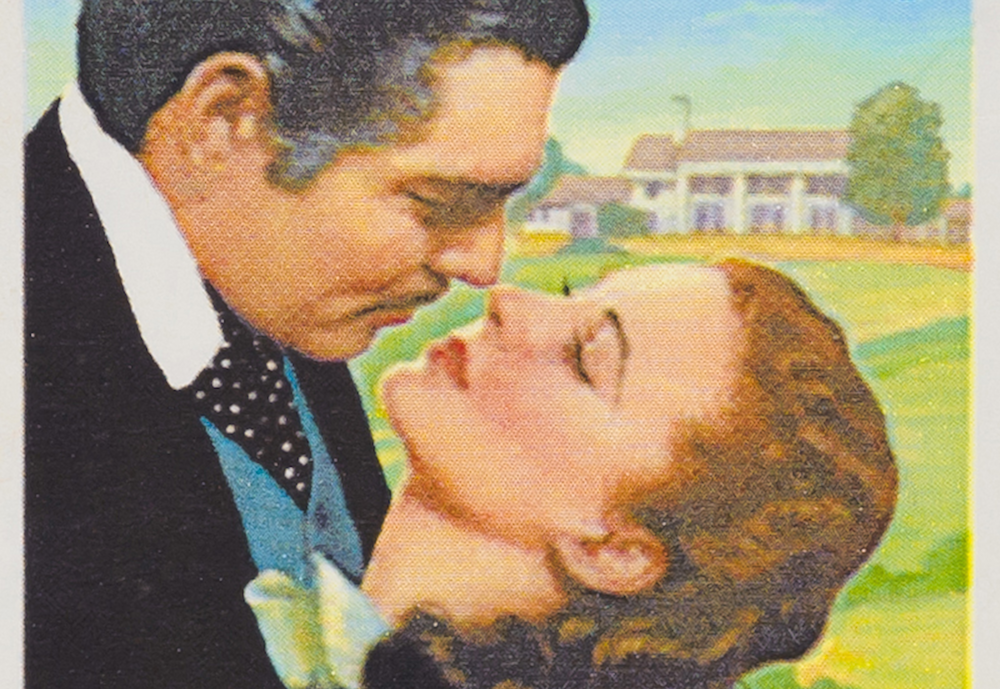
Amidst the flashy hotels and high-rise condos of Midtown Atlanta sits a squat three-story brick home on an expansive green lawn. It obviously doesn’t belong there, but such a small structure occupying such desirable real state must have some significance. And indeed, to millions of bookworms and cinema fans alike, the building where Margaret Mitchell penned her bestselling novel
Gone With the Wind is very significant, indeed.
Today, the Margaret Mitchell House has been lovingly restored as a museum dedicated to the life and work of Georgia’s most famous daughter. The main entry houses a gift shop (of course) and a small gallery of informative panels and photographs describing the young journalist’s life and groundbreaking ideas about how a woman could, in fact, work for a living.
“…the building where Margaret Mitchell penned her bestselling novel Gone With the Wind is very significant, indeed.”
To those who know and love her most famous character, Scarlett O’Hara, many of these traits and stories will sound awfully familiar. Other artifacts in the gallery include letters to military officers requesting critique of battle scenes and newspaper articles describing Mitchell’s charity work later in her life.
The real draw, though, are the guided tours led by extremely passionate volunteers into the restored first-floor apartment. Here, after being sentenced to bed rest following an automobile accident, the young journalist known as Peggy Mitchell began to pen her tale about a Southern belle whose carefree life was turned upside down by the horrors of the Civil War.
Perhaps the most interesting detail to lifelong Gone With the Wind fans is the wooden lion’s head atop the staircase bannister that young Mitchell would have glimpsed every time she opened her front door; no doubt, the inspiration for a similar fixture featured in a pivotal scene in the novel. Visiting the apartment where Scarlett O’Hara and Rhett Butler first appeared on the page is a fitting tribute to the enduring legacy of Gone With the Wind and its feisty young author.
>> Search airfare to Atlanta and check out our indie travel tips for visiting Atlanta.
The Center for Wooden Boats – Seattle, Washington
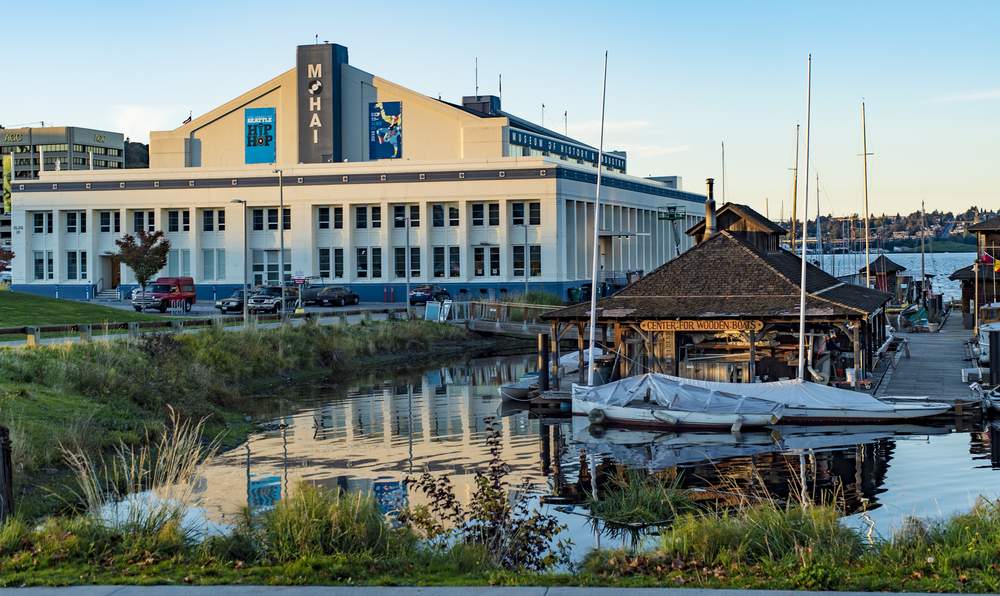
Just north of downtown Seattle sits Lake Union, bustling with seaplanes and best known for its residential houseboats, prominently featured in
Sleepless in Seattle. On the south shore of the lake, however, sits one of the most unusual museums in the United States — the
Center for Wooden Boats. After all, where else could you take a museum’s historic artifacts out onto the water for a pleasure cruise?
The CWB, as it’s informally known, is dedicated to maritime preservation, but they aren’t interested in merely restoring historic vessels to put on display (although the center does house a small, more traditional boating museum). Rather, they hold workshops, community outreach programs, and free Sunday sails, all intended to get people out on the water.
“Their mission: passing down the love and knowledge of small craft sailing.”
Their mission: passing down the love and knowledge of small craft sailing. The museum itself is free, and even better, the center offers ridiculously affordable boat rentals. An afternoon spent on Lake Union, learning about maritime history, going out on the water in a historic canoe or rowboat, for what most travelers would spend on a traditional museum admission alone? That’s a taste of Seattle you won’t find anywhere else.
>> Find flights to Seattle or book a Seattle hotel
Mill City Museum – Minneapolis, Minnesota
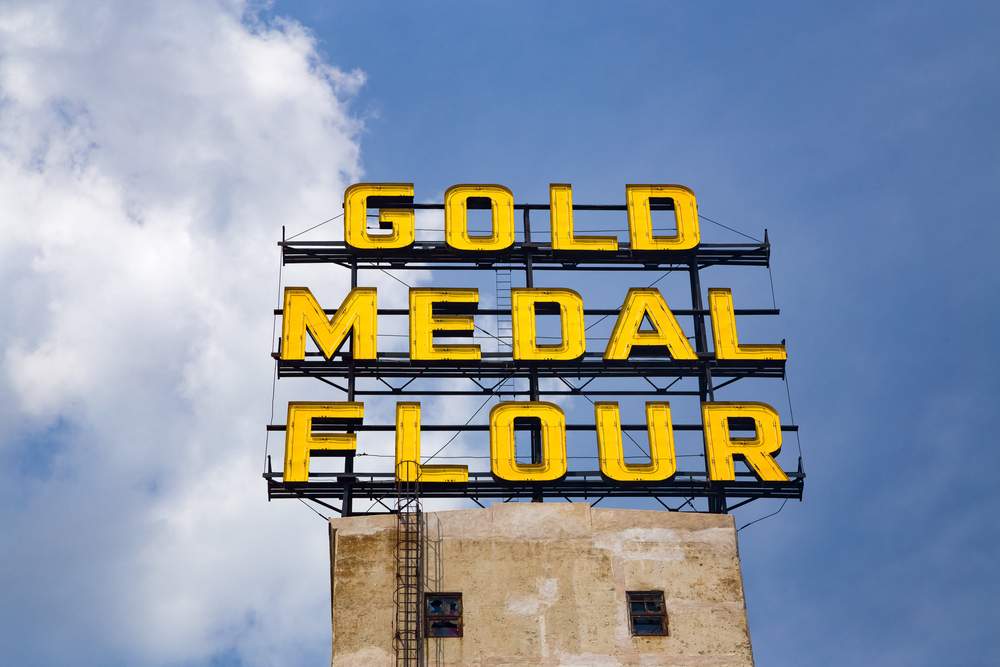
The
Mill City Museum in Minneapolis shouldn’t work. Part history center and part a larger-than-life commercial for General Mills, the museum is the unusual result of a gutsy, multi-million dollar renovation of a burnt-out flour mill on the Mississippi River. That’s right, it’s a museum dedicated to the history of flour in Minneapolis… and surprisingly, it’s fascinating.
In the early twentieth, the building then known as Washburn Mill #1 was the busiest flour mill in the world. The mill, and the industry in general, was crucial to the development of the riverfront city of Minneapolis. This history is detailed in a collection of colorful, kid-friendly exhibits, including a six foot tall box of Bisquick, and an entertainingly informative short film appropriately titled “The History of Minneapolis in Nineteen Minutes”.
“That’s right, it’s a museum dedicated to the history of flour in Minneapolis… and surprisingly, it’s fascinating.”
The real draw, though, is the Flour Tower, a brilliantly composed and surprisingly exciting presentation/elevator ride that ends with a trip to the top-floor viewing platform. Here, visitors can truly appreciate the architecturally stunning structure, where crumbling brick and scarred concrete have been melded with etched glass and modern design. This museum shouldn’t work, but it does. Shockingly well.
>> Buy tickets to Minneapolis
National Civil Rights Museum at the Lorraine Motel – Memphis, Tennessee
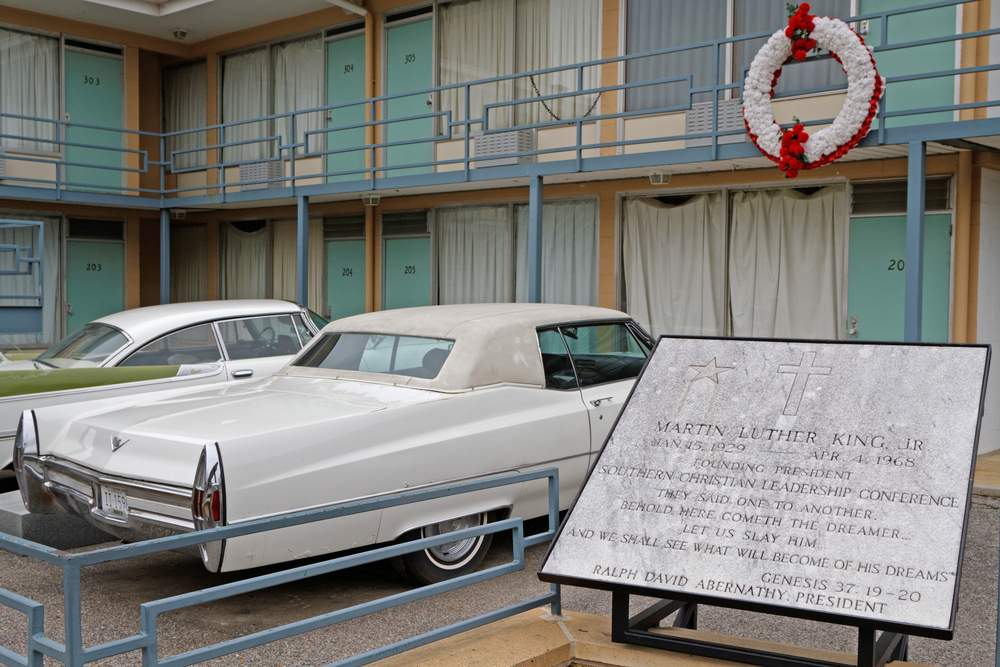
Memphis is known for two Kings. One, the King of Rock ‘n Roll, has an entire estate dedicated to his memory, with its own dedicated Graceland RV Park. The other, Martin Luther King, Jr., has been memorialized in the place of his tragic assassination, the Lorraine Motel. One is all glitz and chintz and glamour, the other a sobering monument to a lost American hero. Sadly, it’s an easy guess at which receives exponentially more visitors per year.
In any case, there’s little arguing that the National Civil Rights Museum at the Lorraine Motel is well worth a somber and reflective visit. This is not a museum housing attractive works of art or flashy multimedia displays. There are educational panels tracing the narrative of the civil rights movement, from the pre-Civil War days to the Birmingham public transport strike sparked by Rosa Parks, but they are simple text-and-photo panels.
“Thanks to the early foresight of the Lorraine’s owner, Walter Lane Bailey, the room was immediately enshrined as Dr. King left it… hair pomade, Gideon Bible, newspapers and all.”
The chills come upon entering the portion of the museum encased in Room 306, where King was staying on April 4, 1968, the day of his assassination on the motel balcony. Thanks to the early foresight of the Lorraine’s owner, Walter Lane Bailey, the room was immediately enshrined as Dr. King left it… hair pomade, Gideon Bible, newspapers and all. Over the loudspeaker, Mahalia Jackson sings King’s favorite hymn, “Precious Lord, Take My Hand”. It’s a moving scene, a masterfully preserved memorial to a great man, and most will find it to be a far more worthy use of time and money than
any other “attraction” in Memphis.
>> Read our Tennessee travel guide
The Kurt Vonnegut Memorial Library – Indianapolis, Indiana

Indianapolis is best known for auto racing, college basketball, and auto racing. However, it also happens to be the hometown of one of the last century’s great American writers, Kurt Vonnegut. Revered for his rapacious wit and subversive humor, Vonnegut is a hero to secular humanists and literary pacifists.
Not the most likely product of Indianapolis, perhaps, but his legacy has been preserved in the Kurt Vonnegut Memorial Library, a non-profit organization devoted to carrying on the causes of literacy, freedom of speech, and plain old good writing, all in Vonnegut’s name.
“On a low table sits a typewriter open to the public, explicitly for the purpose of leaving messages for Kurt’s Typewriter Twitter feed.”
The library itself is very small, but home to a few notable possessions, including Vonnegut’s vintage typewriter and a gallery of the author’s humorous yet moving illustrations. There is also a re-creation of Vonnegut’s library and writing studio, complete with the surprsingly ecletic selection of the books he stored on his shelves. On a low table sits a typewriter open to the public, explicitly for the purpose of leaving messages for
Kurt’s Typewriter Twitter feed.
While not the largest or flashiest museum in Indianapolis, the KVML is a worthy destination for Vonnegut fans, one that truly captures the spirit of a writer who is beloved by many… even if his hometown is better known for sports than literature.
So it goes.
>> Search airfare to Indianapolis
Taliesin West – Scottsdale, Arizona

Architecture tours can be torture for the uninitiated. Information-heavy lectures from pretentious guides, full of unfamiliar terms and obscure references, can scare away even the most agreeable and open-minded traveler. Luckily, a visit to Frank Lloyd Wright’s
Taliesin West, nestled in the McDowell Mountains north of Scottsdale, is anything but dull.
Wright’s winter home, and desert counterpart to his original Taliesin estate in rural Wisconsin, Taliesin West served as an experimental architectural playground for the notoriously fickle architect. The house was in a constant state of change and remodeling as Wright tested out new ideas and inspirations on his own home.
“…visitors experience first-hand the embodiment of his belief that a building should seamlessly flow with its natural environment, not be imposed upon it.”
Nonetheless, it is a brilliant example of Wright’s devotion to organic architecture; visitors experience first-hand the embodiment of his belief that a building should seamlessly flow with its natural environment, not be imposed upon it. Even for architectural novices, the vivid descriptions and of Wright’s colorful theories, such as those regarding open floor plans, use of triangles, and manipulation via furniture placement, provoke thoughtful reflection and appreciation of the craft.
The guides’ somewhat salacious stories about Wright’s infamous ego and tumultuous personal life don’t hurt, either.
Mutter Museum – Philadelphia, Pennsylvania

Philadelphia has more than its fair share of must-see attractions, from its world-class Museum of Art to the tourist magnet known as the Liberty Bell. One unexpected destination, however, is the
Mutter Museum, a small but diverse collection of medical artifacts, with a focus on the odd and peculiar. It’s at once creepy, disturbing, and utterly fascinating.
With an educational approach and a freakish collection, the Mutter Museum provides both entertainment and information… perhaps more information on, say, conjoined twins or jarred tumors than some of the more weak-stomached visitors might want to know.
“It’s at once creepy, disturbing, and utterly fascinating.”
One particularly captivating set of drawers is full of objects that have been removed from human throats. The small museum is both notorious among locals and popular with tourists, so it can be crowded during peak hours, but is still worth a visit. There are few other places in the country, after all, to view preserved fetuses and shrunken heads.
Smart travelers to Philadelphia will save the Mutter Museum for last; otherwise, the Liberty Bell might seem a bit boring in comparison.
>> Book a hostel in Philadelphia
Cable Car Museum – San Francisco, California
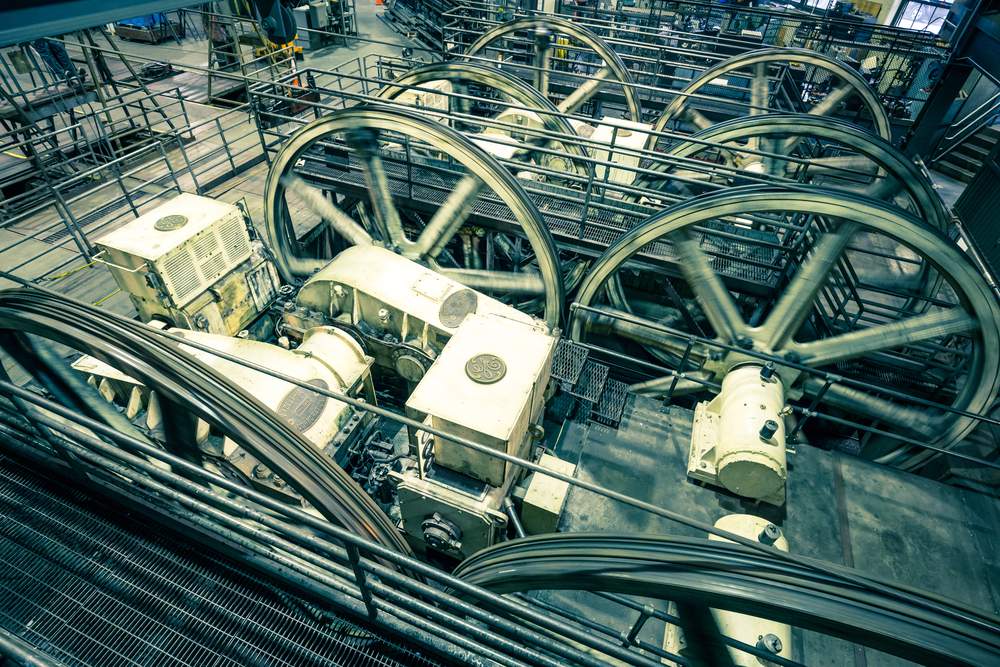
Riding up a treacherously steep San Francisco street on one of her iconic cable cars is already on the must-do list for the vast majority of travelers. But for those who really want to appreciate the mechanical marvel and historical significance of these old-fashioned trolleys, the
Cable Car Museum should not be missed.
This small museum, located at the corner of Washington and Mason Streets in Nob Hill, is unlike most museums. It’s loud, and humid, and a bit cramped. This is because because, first and foremost, the building is home to the working powerhouse of the entire cable car system. In addition to the requisite historic plaques and photographs, visitors to the Cable Car Museum are invited to watch the inner workings of the transportation system.
“…the building is home to the working powerhouse of the entire cable car system.”
Gigantic, noisy engines and wheels power the cables pulling the cars up and down the streets of San Francisco. For anyone with a slight interest in mechanics or industrial-age technology, this unusual little museum will be of great interest. And for those who just want to get out of the rain for awhile, admission is free!
>> Book a flight to San Francisco
Georgia O’ Keefe Museum – Santa Fe, New Mexico
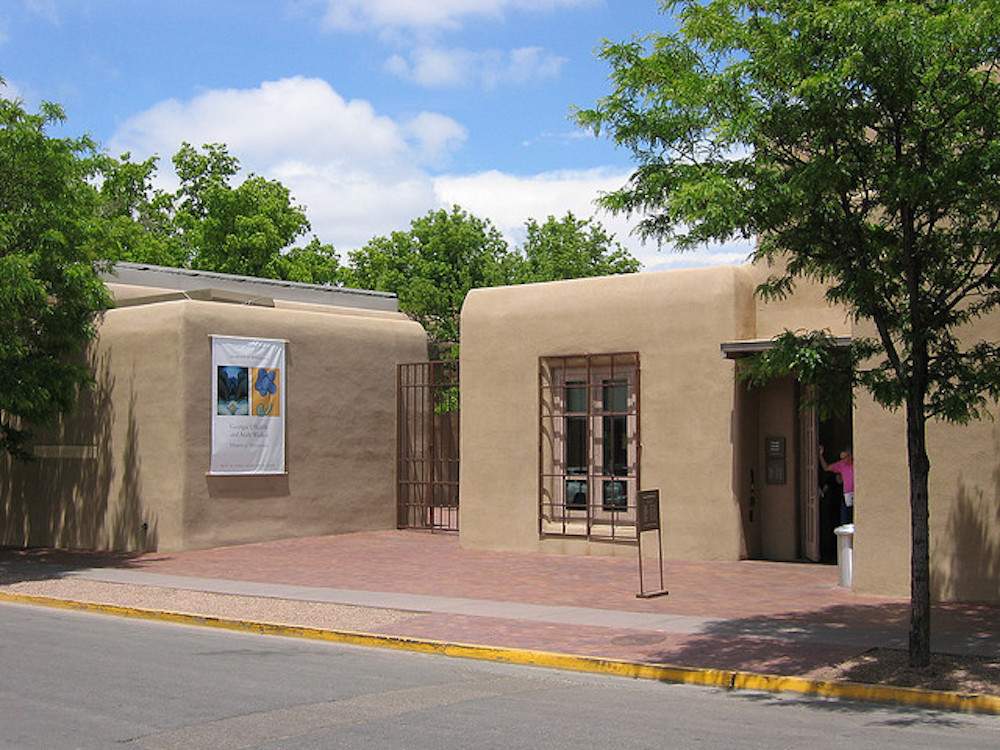
Museums dedicated to single artists can be a dangerous venture. Even if the painter or sculptor is a great one, too often their dedicated galleries are more interested in quantity than quality. In the case of Santa Fe’s
Georgia O’Keefe Museum, however, the selection of her works is carefully curated and makes for a fascinating glimpse into the life and work of America’s most famous female artist.
Today, many only know Georgia O’Keefe as the woman who painted all those close-ups of flowers, vaguely abstract and a little suggestive. The museum does its best to introduce visitors to the rest of O’Keefe’s body of work and her greater significance in the realm of modern American art.
“Today, many only know Georgia O’Keefe as the woman who painted all those close-ups of flowers…”
Visits begin with a short film telling the tumultuous life story of the painter, describing in detail how her art eventually became intertwined with the desert landscape of New Mexico. The exhibits themselves rotate from a much larger collection, providing an overview of O’Keefe’s studies on plants, bones, landscapes, and of course, flowers.
It’s a lot of Georgia O’Keefe, to be sure, but visitors walk away with a much deeper understanding of this often oversimplified artist and the stark beauty of New Mexico.
Phillips Collection – Washington, D.C.
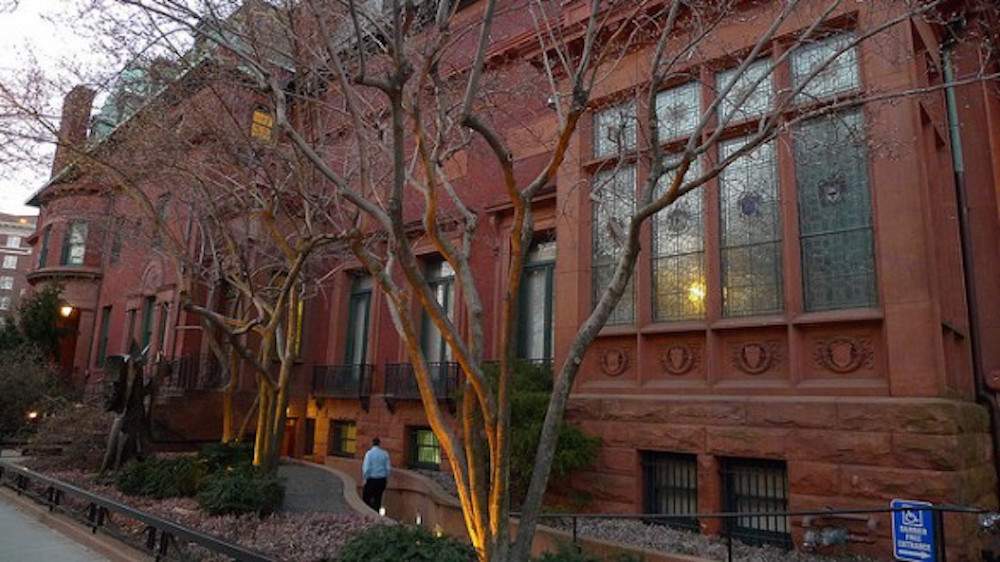
The nation’s capital is known for its museums. Natural history, portrait galleries, American history… even the most seasoned traveler can be overwhelmed by the options available in D.C. Even more overwhelming, however, are the crowds, which flood the mostly-free government museums on family vacations, school trips, and guided tours.
In comparison, the dignified Phillips Collection is a breath of fresh air. Situated in a stately mansion near hip Dupont Circle, a world away from the touristy madness of the National Mall, this excellent art museum offers a more grown-up alternative to the overrun Smithsonians.
It is more reminiscent of a warm, private gallery than a cold, impersonal museum, but the quality of the artwork is unmatched by the larger collections in town. American painters share wall space with European masters, with works by artists such as Homer, Van Gogh, Degas, Whistler, Matisse, Rothko, and Cezanne.
“The gallery is refreshingly personal and intimate…”
In a neighborhood of ostentatious Beaux-Arts mansions and eye-catching architecture, the historic mansion housing the Phillips Collection only adds to the soul-reviving experience of wandering through the museum. The gallery is refreshingly personal and intimate, with the best works hanging like prize possessions over the original fireplaces… a far cry from the noisy, crowded, overly bright museums across town.
>> Get tips for visiting Washington DC with kids and read our indie travel tips for Washington DC
Museum of Lake Minnetonka – Excelsior, Minnesota
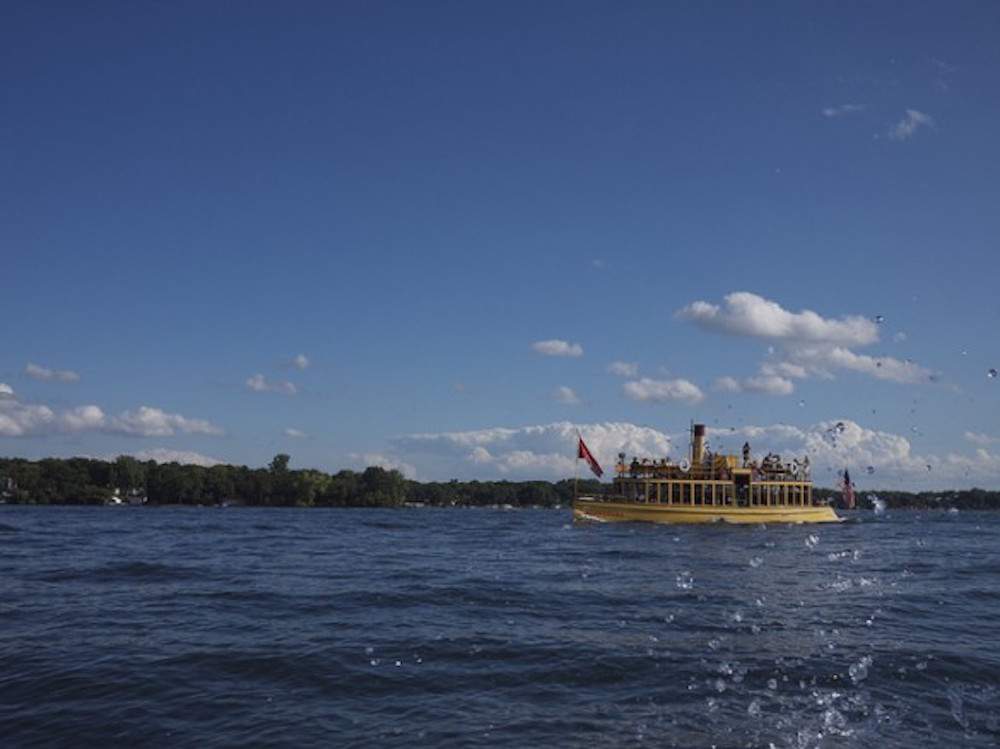
Minnesota is often pictured as a wintry, snow-covered tundra… which is completely accurate six months out of the year. However, when the weather turns warm and the white stuff melts away, Minnesota’s hardy residents make the most of the summer sunshine. Nowhere is this love of the outdoors more evident than on the waters of Minnesota’s lakes — perhaps you’ve heard that they have a few (thousand) of them?
On Lake Minnetonka, the largest body of water near the Twin Cities, a fleet of sailboats, speedboats, fishermen, and pontoons descends each summer. One vessel, however, stands out: the Steamboat Minnehaha. Built in 1906, this historic steamboat sunk to the bottom of the lake in 1926 and was raised and restored nearly sixty years later. Today, it functions as the floating Museum of Lake Minnetonka.
“Today, this is a museum unlike any other, and provides cruises across the beautiful blue lake to visitors all summer long.”
Once a part of the Minnesota transportation system that included streetcars, trains, and boats, the Steamboat Minnehaha was used to ferry passengers across Lake Minnetonka. Today, this is a museum unlike any other, and provides cruises across the beautiful blue lake to visitors all summer long. Its ticket office in the small waterfront town of Excelsior offers a few exhibits on the history of the transportation company, but the primary appeal is the boat itself.
A visit to the Steamboat Minnehaha is perfect outing for those stubborn travelers who claim “I don’t do museums”…. as long as they don’t get seasick.
Ernest Hemingway House – Key West, Florida
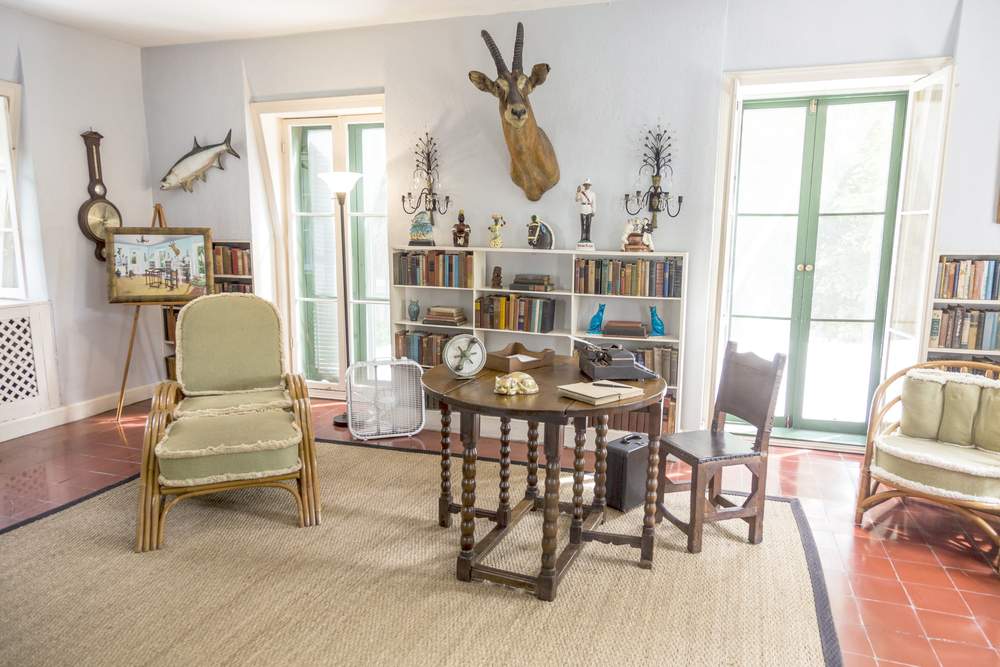
In sultry, sunny Key West, beaches and bars are the main attractions. This far-flung island, with its free-roaming roosters and proliferation of rum and cigar bars, has a reputation as more of a spring break destination than literary mecca. However, on a quiet side street shaded by palm trees, sits the
Hemingway Home and Museum. Ernest Hemingway called Key West home for around a decade, but the island’s influence lingered on his writing throughout his life.
Touring Hemingway’s home is fascinating, but fittingly for Key West, far from a highbrow literary experience. This is mostly because the guides are eager to share gossipy stories about Hemingway’s notorious reputation as a drinker and a womanizer.
“…guides are eager to share gossipy stories about Hemingway’s notorious reputation as a drinker and a womanizer.”
Visitors are shown the tiled urinal from local bar Sloppy Joe’s that Hemingway brought home during a remodel to use as a drinking fountain for his cats. And those cats add another dimension to the house; their descendants, famously inbred thanks to their remote island locale and most bearing six toes, still have the run of the property. Literally dozens of these six-toed cats roam the property, stretching in the sun and occasionally granting visitors the privilege of patting their heads.
Despite the laid-back vibe of the Hemingway house, there is one area that feels more sacred than the rest. The writing studio above the garage has been roped off and recreated to look as if Hemingway merely got up to refill his drink while working away on a novel, complete with shelves lined with weathered hardbacks and trophy animal heads mounted on the walls.
Peeking two or three at a time through the doorway into the studio, visitors can instantly picture the dashing young Hemingway of his Key West days, sitting at the bare wooden table, pounding out his sparse prose on the old typewriter. This is the kind of personally impactful, moving moment that a small museum is all about.
>> Book a flight to Key West or find a Key West hotel
See more interesting museums around the world:














